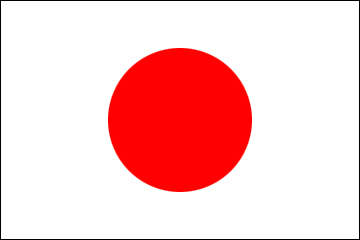IMIN 移民 – The Philippines Japan Historical Museum
2021/12/16
Did you know the relations between Davao and Japan is now more than 100 years? During the pre-war period, many Japanese migrated to Davao to engage in the production of Abaca. At that time, the biggest Japanese Community in Southeast Asia was found in Davao, with its number reaching as high as 20,000. With the rich Nikkei Jin or Japanese descendants’ history in Davao, the Philippines Nikkei Jin Kai established the Philippine Japan Historical Museum in 1994 in Calinan in order to convey the historical relations between Philippines and Japan. In 2019, this museum was renovated under the Japanese Grassroots Cultural Funding Cooperation (GGP) of the Japanese Government and additional funding coming from Philippine Nikkei Jin Kai and Philippine Nikkei Jin Kai International School. Under its new name: “IMIN 移民”- The Philippine-Japan Historical Museum, the museum is now enhanced with better exhibit space and materials augmented with digital devices that further enrich the learning experience of visitors.
![[“IMIN 移民“ – The Philippine-Japan Historical Museum in Calinan]](/files/100273355.png)
The relations between Davao and Japan began in 1903, when, Suda Ryosuke, a Japanese from Kagoshima Prefecture, brought in the first batch of Japanese to Davao as migrant workers. From then on, many Japanese settled in Davao to engage in Abaca production, among them is Ota Kyozaburo, a Japanese businessman who established an Abaca plantation in Mintal and considered by local historians as the "Father of Davao Development”.
With their migration, a Japanese community was established and flourished which led to the establishment of the first Japanese Association in Davao in 1918. Two years later, in the year 1920, the Davao branch of Consulate General of Japan in Manila was established with first chief officer, Migeru Shibasaki. The said branch office was the precursor of the Consulate General of Japan in Davao.
Most of the Japanese lived and worked in Mintal. According to oral accounts, the “Intal” in the word Mintal may have come from the name of Datu Intal, who used to be the Bagobo Chieftain of the area, but many others also say that the name of the place may have originated from the Japanese word “Mintaru” (民留る) which means “a place for people to stay”. With the expansion of the Japanese community, Japanese schools were established in Davao which came up to 13 schools in total, while there was only one Japanese school in Manila, Baguio, Iloilo, Bicol and Cebu, meaning that Davao has developed one of the largest Japanese communities. In addition to schools, the Japanese community has grown significantly, with stores, restaurants, hospitals, photo studios, and many other businesses lining the streets. Some of the Japanese who have moved to Davao married with local people and started their new life. It is said that they had a very wonderful life here in Davao thanks to its rich production of Abaca fiber which is famous worldwide for its strength. Among them, Ota Kogyo Kabushiki Gaisha (太田興業株式会社), a company led by Ota Kyozaburo put their effort to mechanize the process of scraping Abaca fiber and they invented the Hagutan, a machine for stripping fibers in order to produce Abaca fibers. This machine enabled them to produce 15 to 20 kg of Abaca fibers in an hour, while only 10 kg of Abaca fiber can be produced in a day when all the process were done by hand. In addition, they adopted the local lifestyle by making their houses on stilts and using bamboos instead of tatami mat to create Japanese-style houses with Ofuro, a Japanese style bathtub. They also held Japanese festivals and participated in Davao fairs and parades. Until now, there are a lot of Japanese descendants here in Davao and they handed down their Philippine-Japan stories from generations to generations.
![[“IMIN 移民“ – The Philippine-Japan Historical Museum in Calinan]](/files/100273355.png)
[“IMIN 移民“ – The Philippine-Japan Historical Museum in Calinan]
The relations between Davao and Japan began in 1903, when, Suda Ryosuke, a Japanese from Kagoshima Prefecture, brought in the first batch of Japanese to Davao as migrant workers. From then on, many Japanese settled in Davao to engage in Abaca production, among them is Ota Kyozaburo, a Japanese businessman who established an Abaca plantation in Mintal and considered by local historians as the "Father of Davao Development”.
With their migration, a Japanese community was established and flourished which led to the establishment of the first Japanese Association in Davao in 1918. Two years later, in the year 1920, the Davao branch of Consulate General of Japan in Manila was established with first chief officer, Migeru Shibasaki. The said branch office was the precursor of the Consulate General of Japan in Davao.
Most of the Japanese lived and worked in Mintal. According to oral accounts, the “Intal” in the word Mintal may have come from the name of Datu Intal, who used to be the Bagobo Chieftain of the area, but many others also say that the name of the place may have originated from the Japanese word “Mintaru” (民留る) which means “a place for people to stay”. With the expansion of the Japanese community, Japanese schools were established in Davao which came up to 13 schools in total, while there was only one Japanese school in Manila, Baguio, Iloilo, Bicol and Cebu, meaning that Davao has developed one of the largest Japanese communities. In addition to schools, the Japanese community has grown significantly, with stores, restaurants, hospitals, photo studios, and many other businesses lining the streets. Some of the Japanese who have moved to Davao married with local people and started their new life. It is said that they had a very wonderful life here in Davao thanks to its rich production of Abaca fiber which is famous worldwide for its strength. Among them, Ota Kogyo Kabushiki Gaisha (太田興業株式会社), a company led by Ota Kyozaburo put their effort to mechanize the process of scraping Abaca fiber and they invented the Hagutan, a machine for stripping fibers in order to produce Abaca fibers. This machine enabled them to produce 15 to 20 kg of Abaca fibers in an hour, while only 10 kg of Abaca fiber can be produced in a day when all the process were done by hand. In addition, they adopted the local lifestyle by making their houses on stilts and using bamboos instead of tatami mat to create Japanese-style houses with Ofuro, a Japanese style bathtub. They also held Japanese festivals and participated in Davao fairs and parades. Until now, there are a lot of Japanese descendants here in Davao and they handed down their Philippine-Japan stories from generations to generations.
\
![[A replica of Abaca and its fibers]](/files/100273463.png) [A replica of Abaca and its fibers] Abaca is a specie of banana which is native to the Philippines. Its strong fibers are used to produce ropes for ships.
[A replica of Abaca and its fibers] Abaca is a specie of banana which is native to the Philippines. Its strong fibers are used to produce ropes for ships.
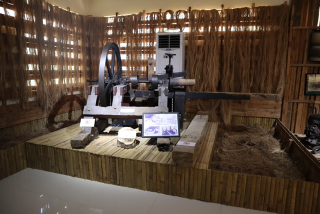 [The Hagutan] A machine invented by Japanese to strip Abaca fibers. This made it possible for them to produce fibers by machine and its production has significantly increased.
[The Hagutan] A machine invented by Japanese to strip Abaca fibers. This made it possible for them to produce fibers by machine and its production has significantly increased.
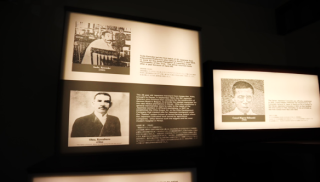 [Three Japanese who are closely related to the history of Davao and Japan] SUDA Ryosuke (left top): He brought first batch of Japanese to Davao in 1903. OTA Kyozaburo (left bottom): He contributed the development of Japanese community in Davao. SHIBASAKI Migeru (right): He was the first chief officer of the Davao branch of the Consulate General of Japan in Manila
[Three Japanese who are closely related to the history of Davao and Japan] SUDA Ryosuke (left top): He brought first batch of Japanese to Davao in 1903. OTA Kyozaburo (left bottom): He contributed the development of Japanese community in Davao. SHIBASAKI Migeru (right): He was the first chief officer of the Davao branch of the Consulate General of Japan in Manila
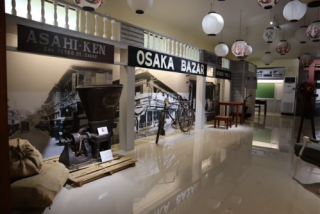 [Japanese Town in Davao]Japanese people’s life in Davao did not seem to be any different than the ones they lived in Japan.
[Japanese Town in Davao]Japanese people’s life in Davao did not seem to be any different than the ones they lived in Japan.
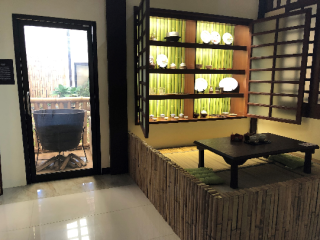 [Japanese style room with Ofuro]Japanese migrants used to live in a house with Japanese style room made of bamboo. Some of them even had Ofuro, a Japanese style bathtub.
[Japanese style room with Ofuro]Japanese migrants used to live in a house with Japanese style room made of bamboo. Some of them even had Ofuro, a Japanese style bathtub.
The vibrant development of Japanese community in Davao was suddenly disrupted by the outbreak of WW II on December 8, 1941. Although the Japanese army landed in Davao region in December 20, the first few years of the war were relatively stable. Davao was far behind the front line and became an important logistic base for the Japanese army in Papua New Guinea, Morotai Island, Halmahera and other islands of this region. Among the logistic operations, food supply was the most important, which entailed a demand to increase substantially agricultural products. Davao’s fertile soil and the existence of big number of Japanese farmers provided premises to pursue this objective. Japanese farmers’ abaca plantations were converted to grow mainly vegetables. Some of those plantations were used to construct runways.
Allied Forces intensified offensives from the beginning of 1944 onwards, changing tide of the war decisively as well as the situation in Davao. Allied Forces started bombing in August 1944 and targeted the center of the city, Sasa port, runways and logistic facilities. After the major campaigns in Luzon and Leyte ended, U.S. Army landed on Parang, Maguindanao on April 17 1945 to occupy Davao from behind instead of launching frontal attack against fortified coastal area of Davao. The U.S. Army entered Davao on May 3. Prior to this, the Japanese residents in Davao--exposed to critical situations--were ordered to evacuate from Davao to Tamugan by the army. Their plight during evacuation was so severe that many of them perished as a result of starvation, diseases, accidents during dangerous escape journey, and violence.
After the war ended, the Japanese immigrants and the children of Japanese parents were forcibly repatriated to Japan. However, Filipino spouses and Filipino spouses’ children under 15 years old were not permitted to go to Japan. For those family members of Japanese immigrants separated from Japanese spouses and fathers, the environment surrounding them was severe due to strong anti-Japanese sentiment as well as confiscation of their property. They exiled into mountainous areas to keep their safety, concealing that they were the family members of Japanese immigrants, which forced them to live in extreme poverty.
San Francisco Peace Treaty signed in 1951 provided a framework to negotiate the reparation issues and normalize the diplomatic relationship, which was the beginning of a long process for reconciliation between two countries. President Quirino’s decision to grant pardon to all of the 105 Japanese war criminals marked a major turning point for reconciliation process through a cycle of apology and forgiveness. Despite the loss of his own wife and three children during World War II, he said in the Statement, “I am doing this because I do not want my children and my people to inherit from me hate for people who might yet be our friends for the permanent interest of the country.” This executive clemency was conducted even though there was fear of being criticized amid severe post war anti-Japan feelings, and greatly contributed to the normalization of Japan-Philippines diplomatic relations, and laid the foundation of the current friendship between Japan and the Philippines. (https://www.mofa.go.jp/press/release/press4e_001181.html)
Reparations Agreement was signed in May 1956 between Japan and Philippine and the diplomatic relationship was normalized in July of the same year. While the bilateral relationship started to improve, the number of Japanese visiting the Philippines increased. The first government-sponsored mission to recover remains of Japanese soldiers, army civilian employees and civilians was dispatched to the Philippines in 1958. Mayors, members of the Armed Forces of the Philippines (AFP) and Police officers showed a generous attitude supporting the mission actively, which caused a strong impression with heartfelt gratitude among the members of the mission. As the number of those Japanese victims fallen in the Philippines was more than 510,000, not only official missions but also many volunteer missions consisting of bereaved families of fallen soldiers and survived veterans visited the Philippines to hold commemorative events for those Japanese victims and Philippine soldiers and civilians fallen in the war. Filipino local community accepted those Japanese visitors showing generosity and forgiveness. Japanese visitors tried to show gratitude by offering support to local communities such as donation to elementary schools. These civilian groups’ “pilgrimage” played an important role to facilitate the reconciliation between the two nations at grassroots level.
Crown Prince Akihito and Crown Princess Michiko’s visit to the Philippines in 1962 marked a milestone in the reconciliation process. In spite of concerns over demonstration of aversion against acts of atrocity conducted by Japanese army, the royal couple were welcomed fervently, which was reported widely in Japan. After foreign travel was liberalized by the Japanese government in 1964, groups of Japanese to visit the Philippines increased rapidly. In August 1968 around 80 former Japanese immigrants visited Davao to commemorate those Japanese who had died before and during WW II and through annual visit of those Japanese the routine interaction between former immigrants, Japanese descendants (Nikkeijin) and local people has been established. The Consulate-General of Japan in Davao and Philippine Nikkei Jin Kai have held commemorative ceremonies annually in August at the Japanese cemetery in Mintal by gaining a full support of Barangay Mintal. The incumbent Mintal Barangay Captain Rey Amador Bargamento says that he remembers clearly as events of his school days those Japanese groups’ visit to Mintal and received presents such as notebooks and pencils, toys, and Japanese snacks.
At the time when the first government-sponsored mission visited the Philippines to recover remains of fallen Japanese, the Government of Japan was cautious about raising monument in the Philippines considering the anti-Japanese feelings. However, as the number of Japanese visited the Philippines to attend the commemoration increased rapidly, expectation to raise an official monument by Japanese Government spread among those Japanese. Besides the official negotiations between two governments, many proposals were raised to erect monuments in places associated with events in WW II including Davao. In January 1971 the construction of Japanese Memorial Garden in Laguna was announced and the completion ceremony was conducted in March 1973. Another example indicating the process of reconciliation in the 1970s was the historic speech given by Prime Minister FUKUDA Takeo at the end of his tour in the Southeast Asian countries on August 18, 1977 at the Manila Hotel. In the speech the prime minister declared following key principles of Japan’s foreign policy vis-à-vis Southeast Asia, now known as the Fukuda Doctrine.
(1) Japan is committed to peace and rejects the role of a military power;
(2) Japan will consolidate the relationship of mutual confidence and trust based on “heart-to-heart” understanding among peoples of Japan and Southeast Asia; and
(3) Japan will be an equal partner of ASEAN and its member countries.
(https://www.ph.emb-japan.go.jp/itpr_ja/00_000664.html)
The new era of re-established relationship mentioned above was a time of Japanese strong economic growth with increased trade and business relationship between Japan and the Philippines, which affected Nikkeijin in Davao region allowing for an enhancement of their activities as well as their status in the society. The second generation Nikkeijin, together with other Davao-born Japanese founded Philippine Nikkei Jin Kai, Inc. (PNJK) in August 1980. According to PNJK, “the main thrust of the organization is to restore the lost image and identity of the war-displaced Japanese descendants Society in the Philippines. It further aims to promote, foster and encouraged mutual help, cooperation and harmonious relationships among all members”. Its mission is;
-To strengthen the progress and service of the association through continuous assistance and unification of its members.
-To promote awareness and provide support to the community by consistently molding and t raining the young generations through its education, cultural, health and wellness and cooperative endeavors.
Its current president, retired Judge Antonina Oshita B. Escovilla, joined the Philippine Nikkeijin Kai to assist persecuted Japanese-descended Filipinos and served as the legal adviser of the organization. Since 2011, as the President of the organization, she has continued to extend support to a huge number of Japanese descendants in their pursuit for the acquisition of Japanese nationality and has garnered the deep trust not only from Japanese descendants but also many other Filipinos.
Dr. Ines Yamanouchi P. Mallari, President of Philippine Nikkei Jin Rengokai, Philippine Nikkei Jin Kai International School and Mindanao Kokusai Daigaku, says that Nikkeijin in Calinan started their activities from 1980s; they gathered once in a month and started Japanese language course. She also attended the Japanese language course. It was the Davao-born Japanese who initially supported PNJK through the Yuko Kyo Kai and thereafter, through Japan Philippine Volunteer Association (JPVA) and Kigyo Kyogikai.
Among the prominent Davao-born Japanese was the late Dr. HIRAHARA Sadashi and Mr. UCHIDA Tatsuo who provided significant support that helped in the growth and development of PNJK. Mr. UCHIDA was born in Tibungco as a son of a Japanese immigrant, but repatriated to Japan in December 1945. He kept a strong sense of solidarity with the Nikkeijin community even after the war, and he repeatedly visited Davao from the early 1970s as a member of former Japanese immigrants group. For Mr. UCHIDA, who was a successful businessperson in Japan, the purpose of his visits were not confined only to commemorate their forefathers but also contribute to Davao where he was born. He helped established orphanages, children’s nursing homes, museum and schools. He challenged the Nikkeijin to be proud of being Nikkeijin whose ancestors made a great contribution to develop Davao and inspired the efforts contributing the development of Davao as Japanese immigrants did before the WW II.
The Davao-born Japanese along with other benefactors emphasized the importance of education for the future of Nikkeijin community as well as that of Davao. Supported strongly by the Japanese benefactors, PNJK International School was established in 1992 and Mindanao Kokusai Daigaku (MKD) in 2001 as a tertiary institution of PNJK with five Bachelor courses. Mr, Uchida also financed together with Tokyo Musashino Lions Club the establishment of the Philippine-Japan Historical Museum in 1994. His contribution to Nikkeijin and the relationship between Japan and Davao is evidenced by the fact that he was conferred the prestigious Datu Bago Award in March 2002 and was recognized by the Davao City Government in 2013 as an “Adopted Son” of Davao City. In January 2017 Prime Minister ABE Shinzo visited MKD and in February 2019 Foreign Minister KONO Taro of Japan visited MKD together with Secretary for Foreign Affairs Teodoro Locsin, Jr. of the Philippines.
Allied Forces intensified offensives from the beginning of 1944 onwards, changing tide of the war decisively as well as the situation in Davao. Allied Forces started bombing in August 1944 and targeted the center of the city, Sasa port, runways and logistic facilities. After the major campaigns in Luzon and Leyte ended, U.S. Army landed on Parang, Maguindanao on April 17 1945 to occupy Davao from behind instead of launching frontal attack against fortified coastal area of Davao. The U.S. Army entered Davao on May 3. Prior to this, the Japanese residents in Davao--exposed to critical situations--were ordered to evacuate from Davao to Tamugan by the army. Their plight during evacuation was so severe that many of them perished as a result of starvation, diseases, accidents during dangerous escape journey, and violence.
After the war ended, the Japanese immigrants and the children of Japanese parents were forcibly repatriated to Japan. However, Filipino spouses and Filipino spouses’ children under 15 years old were not permitted to go to Japan. For those family members of Japanese immigrants separated from Japanese spouses and fathers, the environment surrounding them was severe due to strong anti-Japanese sentiment as well as confiscation of their property. They exiled into mountainous areas to keep their safety, concealing that they were the family members of Japanese immigrants, which forced them to live in extreme poverty.
San Francisco Peace Treaty signed in 1951 provided a framework to negotiate the reparation issues and normalize the diplomatic relationship, which was the beginning of a long process for reconciliation between two countries. President Quirino’s decision to grant pardon to all of the 105 Japanese war criminals marked a major turning point for reconciliation process through a cycle of apology and forgiveness. Despite the loss of his own wife and three children during World War II, he said in the Statement, “I am doing this because I do not want my children and my people to inherit from me hate for people who might yet be our friends for the permanent interest of the country.” This executive clemency was conducted even though there was fear of being criticized amid severe post war anti-Japan feelings, and greatly contributed to the normalization of Japan-Philippines diplomatic relations, and laid the foundation of the current friendship between Japan and the Philippines. (https://www.mofa.go.jp/press/release/press4e_001181.html)
Reparations Agreement was signed in May 1956 between Japan and Philippine and the diplomatic relationship was normalized in July of the same year. While the bilateral relationship started to improve, the number of Japanese visiting the Philippines increased. The first government-sponsored mission to recover remains of Japanese soldiers, army civilian employees and civilians was dispatched to the Philippines in 1958. Mayors, members of the Armed Forces of the Philippines (AFP) and Police officers showed a generous attitude supporting the mission actively, which caused a strong impression with heartfelt gratitude among the members of the mission. As the number of those Japanese victims fallen in the Philippines was more than 510,000, not only official missions but also many volunteer missions consisting of bereaved families of fallen soldiers and survived veterans visited the Philippines to hold commemorative events for those Japanese victims and Philippine soldiers and civilians fallen in the war. Filipino local community accepted those Japanese visitors showing generosity and forgiveness. Japanese visitors tried to show gratitude by offering support to local communities such as donation to elementary schools. These civilian groups’ “pilgrimage” played an important role to facilitate the reconciliation between the two nations at grassroots level.
Crown Prince Akihito and Crown Princess Michiko’s visit to the Philippines in 1962 marked a milestone in the reconciliation process. In spite of concerns over demonstration of aversion against acts of atrocity conducted by Japanese army, the royal couple were welcomed fervently, which was reported widely in Japan. After foreign travel was liberalized by the Japanese government in 1964, groups of Japanese to visit the Philippines increased rapidly. In August 1968 around 80 former Japanese immigrants visited Davao to commemorate those Japanese who had died before and during WW II and through annual visit of those Japanese the routine interaction between former immigrants, Japanese descendants (Nikkeijin) and local people has been established. The Consulate-General of Japan in Davao and Philippine Nikkei Jin Kai have held commemorative ceremonies annually in August at the Japanese cemetery in Mintal by gaining a full support of Barangay Mintal. The incumbent Mintal Barangay Captain Rey Amador Bargamento says that he remembers clearly as events of his school days those Japanese groups’ visit to Mintal and received presents such as notebooks and pencils, toys, and Japanese snacks.
At the time when the first government-sponsored mission visited the Philippines to recover remains of fallen Japanese, the Government of Japan was cautious about raising monument in the Philippines considering the anti-Japanese feelings. However, as the number of Japanese visited the Philippines to attend the commemoration increased rapidly, expectation to raise an official monument by Japanese Government spread among those Japanese. Besides the official negotiations between two governments, many proposals were raised to erect monuments in places associated with events in WW II including Davao. In January 1971 the construction of Japanese Memorial Garden in Laguna was announced and the completion ceremony was conducted in March 1973. Another example indicating the process of reconciliation in the 1970s was the historic speech given by Prime Minister FUKUDA Takeo at the end of his tour in the Southeast Asian countries on August 18, 1977 at the Manila Hotel. In the speech the prime minister declared following key principles of Japan’s foreign policy vis-à-vis Southeast Asia, now known as the Fukuda Doctrine.
(1) Japan is committed to peace and rejects the role of a military power;
(2) Japan will consolidate the relationship of mutual confidence and trust based on “heart-to-heart” understanding among peoples of Japan and Southeast Asia; and
(3) Japan will be an equal partner of ASEAN and its member countries.
(https://www.ph.emb-japan.go.jp/itpr_ja/00_000664.html)
The new era of re-established relationship mentioned above was a time of Japanese strong economic growth with increased trade and business relationship between Japan and the Philippines, which affected Nikkeijin in Davao region allowing for an enhancement of their activities as well as their status in the society. The second generation Nikkeijin, together with other Davao-born Japanese founded Philippine Nikkei Jin Kai, Inc. (PNJK) in August 1980. According to PNJK, “the main thrust of the organization is to restore the lost image and identity of the war-displaced Japanese descendants Society in the Philippines. It further aims to promote, foster and encouraged mutual help, cooperation and harmonious relationships among all members”. Its mission is;
-To strengthen the progress and service of the association through continuous assistance and unification of its members.
-To promote awareness and provide support to the community by consistently molding and t raining the young generations through its education, cultural, health and wellness and cooperative endeavors.
Its current president, retired Judge Antonina Oshita B. Escovilla, joined the Philippine Nikkeijin Kai to assist persecuted Japanese-descended Filipinos and served as the legal adviser of the organization. Since 2011, as the President of the organization, she has continued to extend support to a huge number of Japanese descendants in their pursuit for the acquisition of Japanese nationality and has garnered the deep trust not only from Japanese descendants but also many other Filipinos.
Dr. Ines Yamanouchi P. Mallari, President of Philippine Nikkei Jin Rengokai, Philippine Nikkei Jin Kai International School and Mindanao Kokusai Daigaku, says that Nikkeijin in Calinan started their activities from 1980s; they gathered once in a month and started Japanese language course. She also attended the Japanese language course. It was the Davao-born Japanese who initially supported PNJK through the Yuko Kyo Kai and thereafter, through Japan Philippine Volunteer Association (JPVA) and Kigyo Kyogikai.
Among the prominent Davao-born Japanese was the late Dr. HIRAHARA Sadashi and Mr. UCHIDA Tatsuo who provided significant support that helped in the growth and development of PNJK. Mr. UCHIDA was born in Tibungco as a son of a Japanese immigrant, but repatriated to Japan in December 1945. He kept a strong sense of solidarity with the Nikkeijin community even after the war, and he repeatedly visited Davao from the early 1970s as a member of former Japanese immigrants group. For Mr. UCHIDA, who was a successful businessperson in Japan, the purpose of his visits were not confined only to commemorate their forefathers but also contribute to Davao where he was born. He helped established orphanages, children’s nursing homes, museum and schools. He challenged the Nikkeijin to be proud of being Nikkeijin whose ancestors made a great contribution to develop Davao and inspired the efforts contributing the development of Davao as Japanese immigrants did before the WW II.
The Davao-born Japanese along with other benefactors emphasized the importance of education for the future of Nikkeijin community as well as that of Davao. Supported strongly by the Japanese benefactors, PNJK International School was established in 1992 and Mindanao Kokusai Daigaku (MKD) in 2001 as a tertiary institution of PNJK with five Bachelor courses. Mr, Uchida also financed together with Tokyo Musashino Lions Club the establishment of the Philippine-Japan Historical Museum in 1994. His contribution to Nikkeijin and the relationship between Japan and Davao is evidenced by the fact that he was conferred the prestigious Datu Bago Award in March 2002 and was recognized by the Davao City Government in 2013 as an “Adopted Son” of Davao City. In January 2017 Prime Minister ABE Shinzo visited MKD and in February 2019 Foreign Minister KONO Taro of Japan visited MKD together with Secretary for Foreign Affairs Teodoro Locsin, Jr. of the Philippines.
![[Picture of Japanese Troops in front of the hospital]](/files/100273465.png) [Picture of Japanese Troops in front of the hospital]Japan occupied Davao during the WWII.
[Picture of Japanese Troops in front of the hospital]Japan occupied Davao during the WWII.
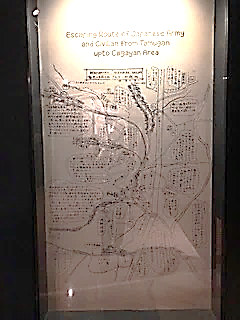 [Evacuation Route of Japanese Army and Civilian from Tamugan up to Cagayan area] People evacuate under the trees of mountains up to Cagayan area
[Evacuation Route of Japanese Army and Civilian from Tamugan up to Cagayan area] People evacuate under the trees of mountains up to Cagayan area
When Emperor Akihito and Empress Michiko visited the Philippines in January 2016 to celebrate the 60th anniversary of the normalization of diplomatic relations between Japan and the Philippines, 92 second generation Nikkeijin, including many from Davao region, led by Dr. Ines Yamanouchi Mallari were invited to meet the Emperor and Empress. She says that the meeting with Emperor and Empress was a moving ceremony symbolizing the reunion of Nikkeijin with their own beloved but forcibly separated father and other family members. Emperor and Empress, who accepted all 92 Nikkeijin generously and warmly, generated an emotion among them that they were eventually accepted by their fathers after a long journey of their lives. A few years later, Dr. Mallari was also invited to the enthronement ceremony of Emperor Naruhito in October 2019 as a representative of Nikkeijin in the Philippines.
PNJK educates new generation of Nikkeijin, fourth and fifth generation of Nikkeijin so that they will be young Nikkeijin leaders. PNJK arranged seminars to teach the historical backgrounds of Nikkeijin, the role of Nikkeijin to bridge Japan and the Philippines, and how they should contribute to the development of Davao and the Philippines. PNJK officials have also been attending the International Convention of Nikkei and Japanese Abroad. Initially attended by then-PNJK president Mr. Arturo Hagio with Mr. Rodulfo Tutor in 1983, PNJK has been actively participating in the said convention hosted by The Association of Nikkei and Japanese Abroad up to the present to exchange the information on the Nikkeijin communities in many countries. PNJK, PNJK International School and MKD has introduced Japanese culture together with Consulate-General in Japan, actively.
At the time of Great East Japan Earthquake, these PNJK-related organizations arranged a “Run for Japan” event with more than 1,000 participants to show solidarity with Japan. When Japan was hit by Typhoon Jebi (Typhoon Number 21), their organizations likewise collected donations through various means to support the victims. In November 2019, PNJK together with other Japan related organization and Consulate-General of Japan visited and conducted relief operation to the earthquake victims in Magsaysay, Davao del Sur.
The Government of Japan announced on November 3, 2018 the conferment of The Order of the Rising Sun, Gold Rays with Rosette on Retired Judge Antonina B. Oshita Escovilla. In recognition of her contribution to the improvement of the status of Japanese descendants, including educational environment, and to the promotion of mutual understanding between Japan and the Philippines. The conferment ceremony was held on February10, 2019 in conjunction with the inauguration ceremony of the Consulate-General of Japan in Davao.
On March 8, 2019, Dr. Ines P. Yamanouchi Mallari was conferred the Datu Bago Award in recognition of her contributions as bridge between Japan and the Philippines. On November 3, 2021, the Government of Japan announced the conferment of The Order of the Rising Sun, Gold Rays with Neck Ribbon on Dr. Ines Yamanouchi Mallari in recognition of her contribution in promoting academic exchange and mutual understanding between Japan and the Philippines. As a third-generation Japanese descendant, Dr. Mallari has also contributed to the improvement of the status of Nikkeijin and the bilateral exchange between Japan and the Philippines through activities such as supporting the development of young generation of Nikkeijin community, organization of annual memorial service for the remembrance of Japanese settlers in Davao. In particular, she has greatly contributed to the investigation and interviews of Japanese descendants for the recognition of their Japanese nationality.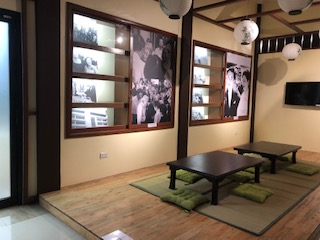
PNJK educates new generation of Nikkeijin, fourth and fifth generation of Nikkeijin so that they will be young Nikkeijin leaders. PNJK arranged seminars to teach the historical backgrounds of Nikkeijin, the role of Nikkeijin to bridge Japan and the Philippines, and how they should contribute to the development of Davao and the Philippines. PNJK officials have also been attending the International Convention of Nikkei and Japanese Abroad. Initially attended by then-PNJK president Mr. Arturo Hagio with Mr. Rodulfo Tutor in 1983, PNJK has been actively participating in the said convention hosted by The Association of Nikkei and Japanese Abroad up to the present to exchange the information on the Nikkeijin communities in many countries. PNJK, PNJK International School and MKD has introduced Japanese culture together with Consulate-General in Japan, actively.
At the time of Great East Japan Earthquake, these PNJK-related organizations arranged a “Run for Japan” event with more than 1,000 participants to show solidarity with Japan. When Japan was hit by Typhoon Jebi (Typhoon Number 21), their organizations likewise collected donations through various means to support the victims. In November 2019, PNJK together with other Japan related organization and Consulate-General of Japan visited and conducted relief operation to the earthquake victims in Magsaysay, Davao del Sur.
The Government of Japan announced on November 3, 2018 the conferment of The Order of the Rising Sun, Gold Rays with Rosette on Retired Judge Antonina B. Oshita Escovilla. In recognition of her contribution to the improvement of the status of Japanese descendants, including educational environment, and to the promotion of mutual understanding between Japan and the Philippines. The conferment ceremony was held on February10, 2019 in conjunction with the inauguration ceremony of the Consulate-General of Japan in Davao.
On March 8, 2019, Dr. Ines P. Yamanouchi Mallari was conferred the Datu Bago Award in recognition of her contributions as bridge between Japan and the Philippines. On November 3, 2021, the Government of Japan announced the conferment of The Order of the Rising Sun, Gold Rays with Neck Ribbon on Dr. Ines Yamanouchi Mallari in recognition of her contribution in promoting academic exchange and mutual understanding between Japan and the Philippines. As a third-generation Japanese descendant, Dr. Mallari has also contributed to the improvement of the status of Nikkeijin and the bilateral exchange between Japan and the Philippines through activities such as supporting the development of young generation of Nikkeijin community, organization of annual memorial service for the remembrance of Japanese settlers in Davao. In particular, she has greatly contributed to the investigation and interviews of Japanese descendants for the recognition of their Japanese nationality.

[Pictures of Former Japanese Emperor and Empress when they visited the Philippines as Crown Prince and Princess]
If you wish to learn more about the close relations and long history between Davao and Japan, visit the “IMIN 移民” – The Philippines Japan Historical Museum.
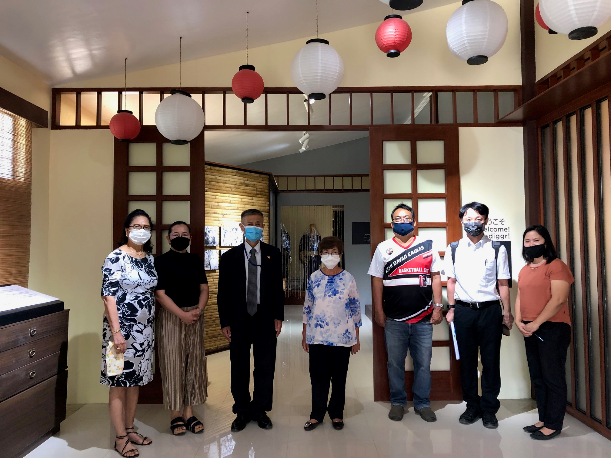
[Officers of Philippine Nikkei Jin Kai and Consul General MIWA]
There are many Japanese descendants in Davao and they tell their stories to young generations.
